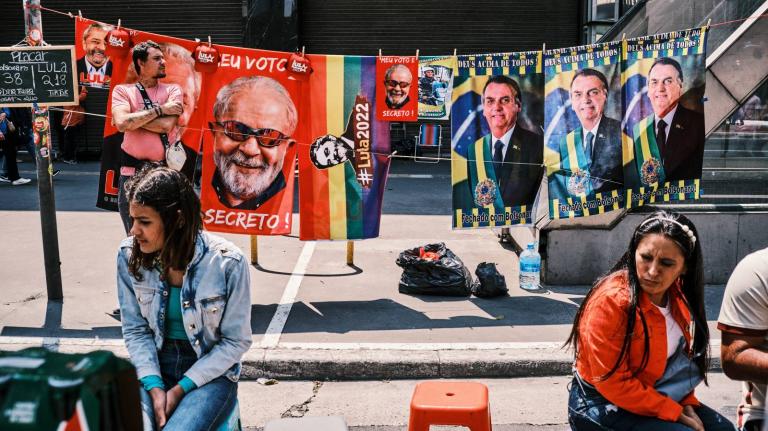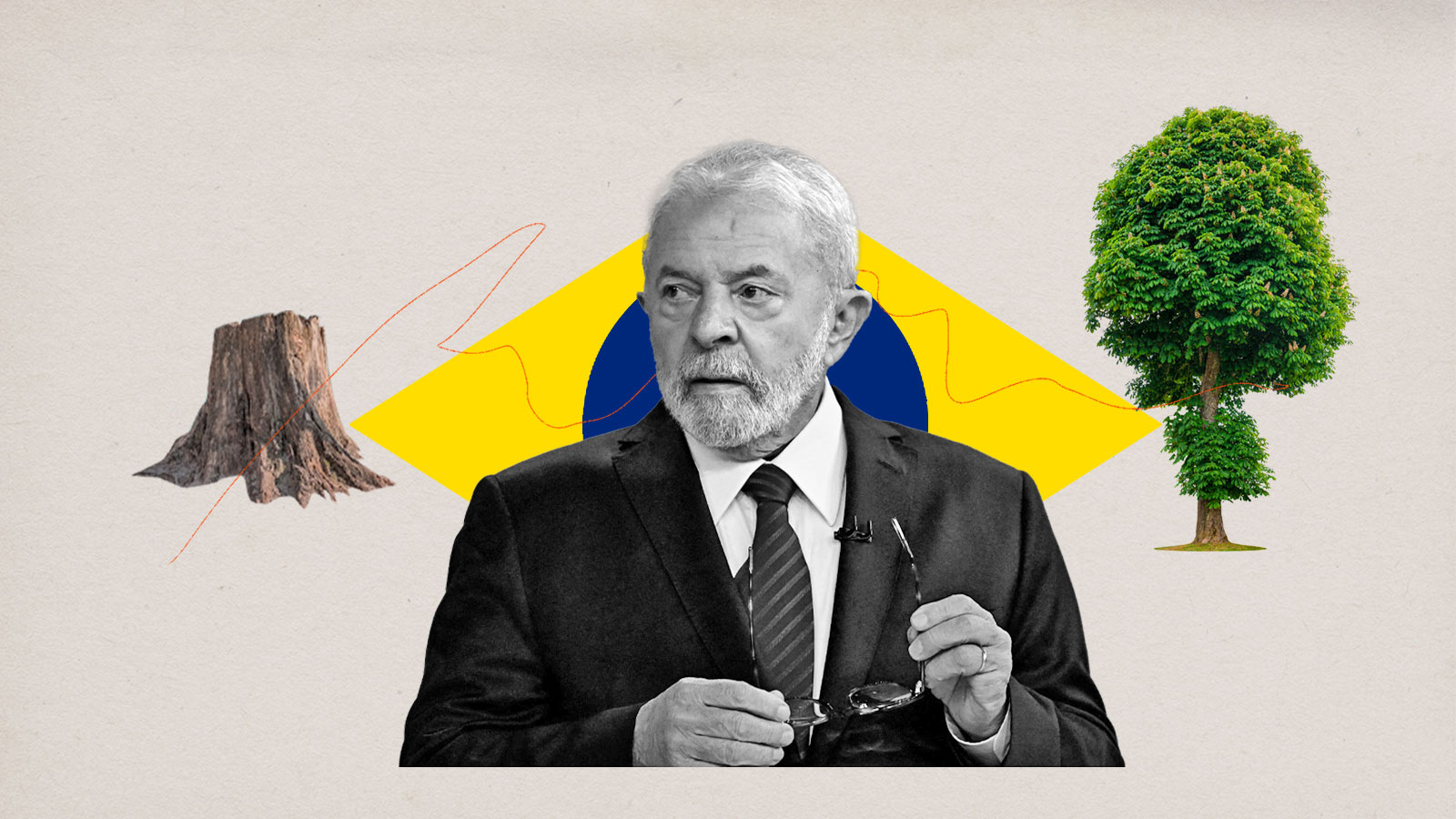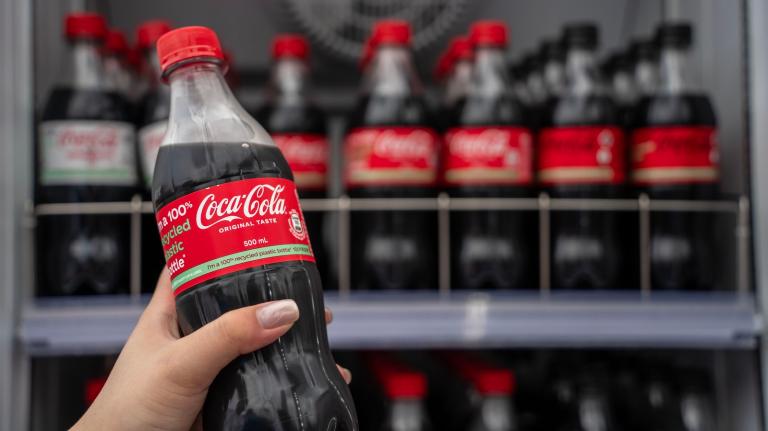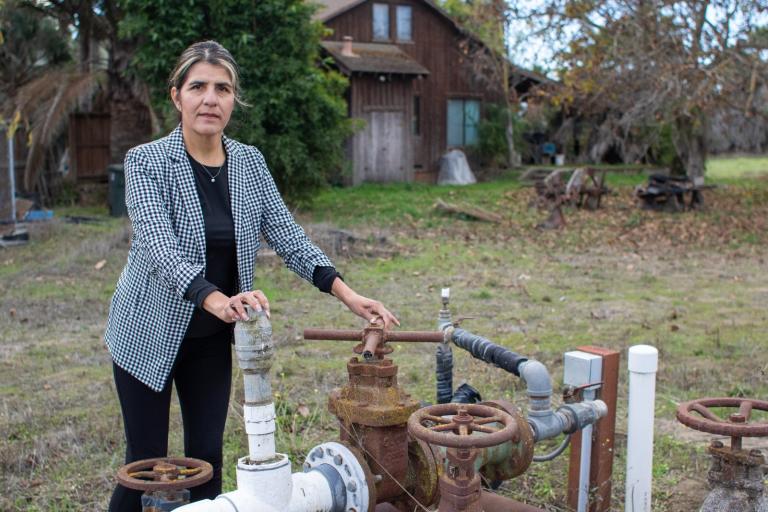It is the tradition of inaugurations in Brazil for the incoming president to ascend the ramp of the Planalto Palace, the country’s equivalent to the West Wing of the White House, and receive the presidential sash from the outgoing head of state. The gesture is meant to symbolize a peaceful transition of power. In the inauguration of Luiz Inácio Lula da Silva, which took place on January 1, things were a little different. In a final emulation of his political idol Donald Trump, the outgoing president, Jair Bolsonaro, often referred to as the “Trump of the tropics,” was absent. He had flown to Orlando, Florida, two days earlier for an extended vacation.
Instead, Lula used the moment to send a political message. He chose to walk the ramp with a small group of individuals meant to represent those his government will prioritize. Among them was the 90-year-old Indigenous leader Raoni Metukitire, of the Amazonian Kayapó people. Bolsonaro had attacked Raoni in a 2019 United Nations General Assembly speech, accusing him of being a pawn of foreign governments and NGOs that seek to undermine development in the Brazilian Amazon. Raoni’s presence at the Planalto signaled that Indigenous rights and protection of the environment will be high on Lula’s new presidential agenda.
“Our goal is to reach zero deforestation and zero greenhouse gas emissions in our electrical grid,” Lula said in his inaugural address to Congress, adding that Bolsonaro’s government had “destroyed environmental protections.”
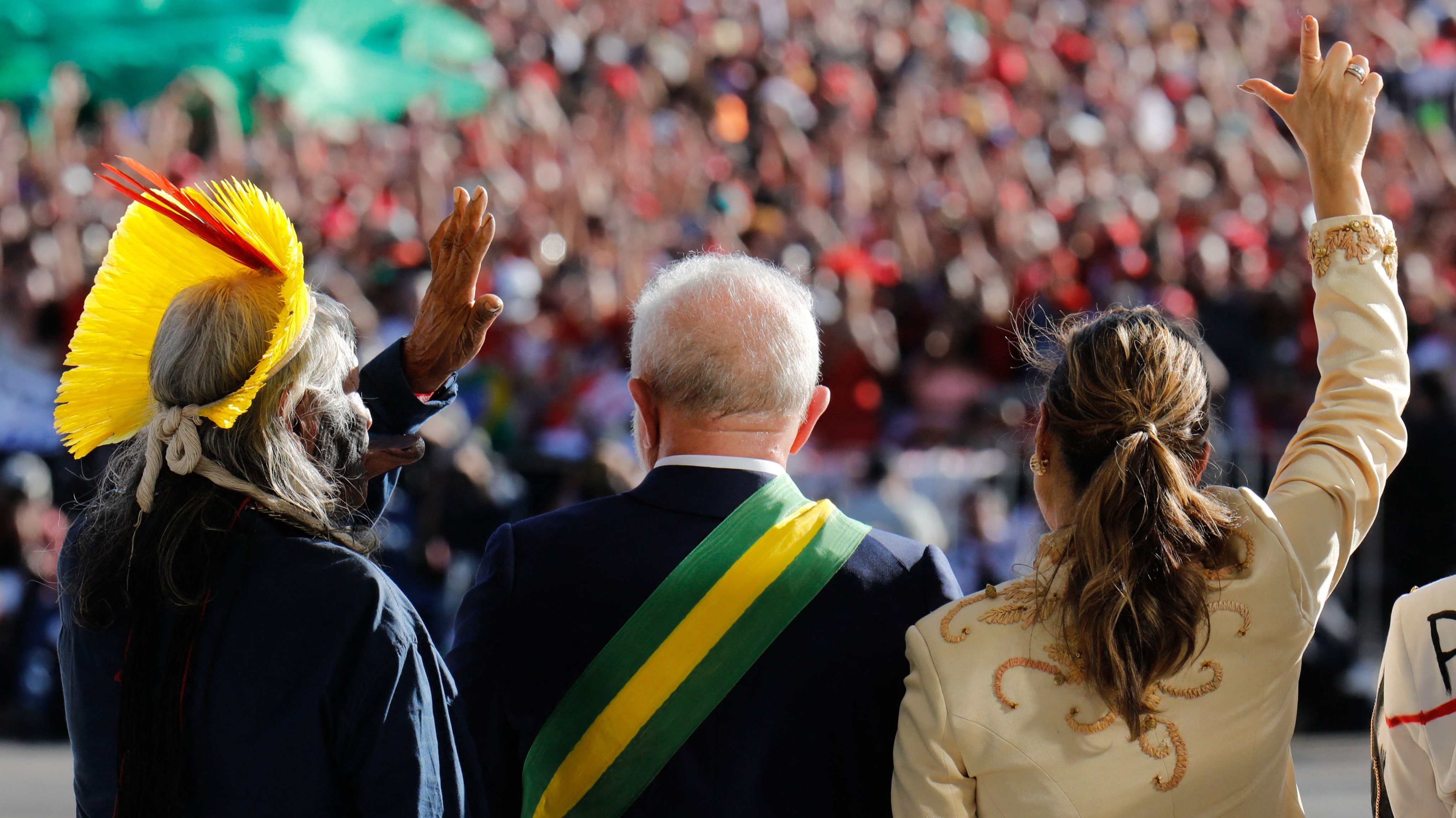
The diagnosis is an accurate one. Over four years, Bolsonaro dismantled environmental regulations, much of it through executive action, and gutted federal agencies tasked with enforcing environmental laws. His actions and rhetoric emboldened illegal miners and loggers, who felt they could act with impunity. Deforestation in the Amazon rainforest spiked 60 percent during Bolsonaro’s presidency, the highest relative increase since the beginning of measurements by satellite in 1988.
The preservation of the Amazon is crucial to the climate crisis. The rainforest was once the world’s greatest carbon sink, but because of forest clearing fires and degradation caused by rising temperatures, there are large regions of the Amazon today that emit more carbon than they absorb. The situation could get substantially worse. Studies show that if 20 to 25 percent of the Amazon is deforested, the biome would no longer be able to sustain itself. This would trigger an irreversible process of dieback that could turn the forest into a savannah in a matter of decades. Currently, 15 to 17 percent of the Amazon has already vanished.
Lula served two previous terms as president between 2003 and 2011. During this time, in stark contrast to Bolsonaro’s tenure, deforestation in the Amazon fell by a historic 67 percent. Marina Silva, a well-known environmental activist and politician in Brazil, led this crackdown as Lula’s Minister of the Environment. Silva will once again hold that office, but environmentalists say this time around the government will have to rebuild Brazilian environmental policy virtually from the ground up if it is to achieve comparable results.
The first step will be to reverse many of the changes Bolsonaro enacted though executive action. This process has already begun. On his first day in office, Lula issued a series of decrees that overturned some of Bolsonaro’s most egregious changes to environmental regulations. He reinstated environmental funding programs, restructured key agencies that had been hollowed out, and reestablished the government’s anti-deforestation plan, which had been discontinued by Bolsonaro. But there is much more work to be done.
“It’s a scorched earth scenario,” said Suely Araújo, referring to the environmental regulatory apparatus that Lula inherited from his predecessor. Araújo is a senior specialist in public policy at Observatório do Clima, a coalition of climate-focused civil society organizations. She spent the last months of 2022 working with Lula’s transition team, prepping the first steps in what is expected to be a long process of recovery. “It will take longer to rebuild these institutions than it did to destroy them.”
Early in his administration, Bolsonaro tried to dissolve the Ministry of the Environment entirely, but was unable to do so due to backlash from civil society and Congress. Instead, his administration’s strategy became to weaken the country’ scientific and environmental institutions from within. Describing this process during a ruling about a slew of changes to environmental policy by Bolsonaro’s government, a Brazilian Supreme Court Justice evoked the image of a termite infestation eating away at environmental protection agencies from the inside out.

Shortly after Bolsonaro took office in 2019, Natalie Unterstell, of the watchdog group Política por Inteiro, began monitoring executive actions that had an impact on deforestation and climate change. “They were pressing buttons that sent shocks through the entire system,” she said.
Unterstell began this monitoring effort alone, keeping an updated spreadsheet, but the process soon became overwhelming due to sheer quantity. She enlisted the help of data scientists and developed an algorithm that would scrape the daily government bulletin, pinpointing the decrees that merited closer attention. In four years, Política Por Inteiro identified 2,189 executive acts that are “relevant to climate and socio-environmental policy.”
Many of the early decrees involved institutional reform. Offices and task forces within the executive branch that had climate change or deforestation in the name were simply eliminated. Regulatory agencies were transferred wholesale from the Ministry of the Environment and put under the purview of sectors they were supposed to regulate. The Forestry Service for example, which manages nature reserves, became an agency of the Ministry of Agriculture. The National Water Agency, which regulates water resources and use, was transferred to the Ministry of Regional Development.
Bolsonaro also named loyalists friendly to logging, mining, and agribusiness interests to head key environmental agencies like the Brazilian Institute of the Environment and Renewable and Natural Resources, also known as IBAMA, the main agency involved in monitoring and enforcing laws against deforestation.
Three months into his presidency, Bolsonaro issued a decree that froze the Amazon Fund. The fund, which is bankrolled by foreign governments, aims to support Brazil’s efforts to preserve its forest and is a crucial source of financing for IBAMA. The move possibly deprived Brazil of $20 billion in funding for environmental conservation projects, according to a report from the government’s own comptroller.
A critical element of the government’s strategy was to remove civil society and the scientific community from the environmental regulatory process. In 2019, Ricardo Salles, Bolsonaro’s Minister of the Environment, issued orders that restructured the National Environment Council, or CONAMA, a body that makes key decisions relating to environmental policy in Brazil. CONAMA was traditionally composed of a diverse group of stakeholders, including business interests, scientists, NGOs, Indigenous groups, and federal, state, and local representatives. Salles downsized the council and in doing so cut seats belonging to non-business civil society organizations from 11 to 4, giving them less proportional representation.
“They would bring four or five decisions up for a vote at once, and the councils were weakened so they had the opportunity approve whatever they wanted,” said Unterstell.
The system of environmental fines, which was already inefficient before Bolsonaro took office, suffered significant changes. Operations to curb deforestation began to be executed primarily by the military instead of IBAMA, an agency with decades of expertise in combating environmental crimes and the power to fine illegal deforesters. Even though the military reportedly spent $110 million to monitor roads and rivers in the Amazon region — roughly 10 times the yearly budget for IBAMA — deforestation rates skyrocketed. An investigation by the Climate Policy Initiative and World Wildlife Fund showed environmental fines decreased by almost a third during the Bolsonaro administration when compared to 2015 levels. The government also created a convoluted appeals process which in practice ground the entire system to a halt, resulting in fines being paid at an even lower rate than before. From 2019 through 2021, 98 percent of IBAMA fines went unpaid.
“The message was that if you commit environmental crimes you don’t need to worry because the chances that you will be held accountable are minimal,” said Unterstell.
During the pandemic the pace of deregulation accelerated. In a leaked video of a cabinet meeting in 2020, Salles, the country’s then-environment minister, urged his colleagues to use the global crisis as an opportunity. “We need to make an effort while we are in this calm moment in terms of press coverage, because they are only talking about COVID, and push through and change all the rules and simplify the norms,” he was heard saying in the video.
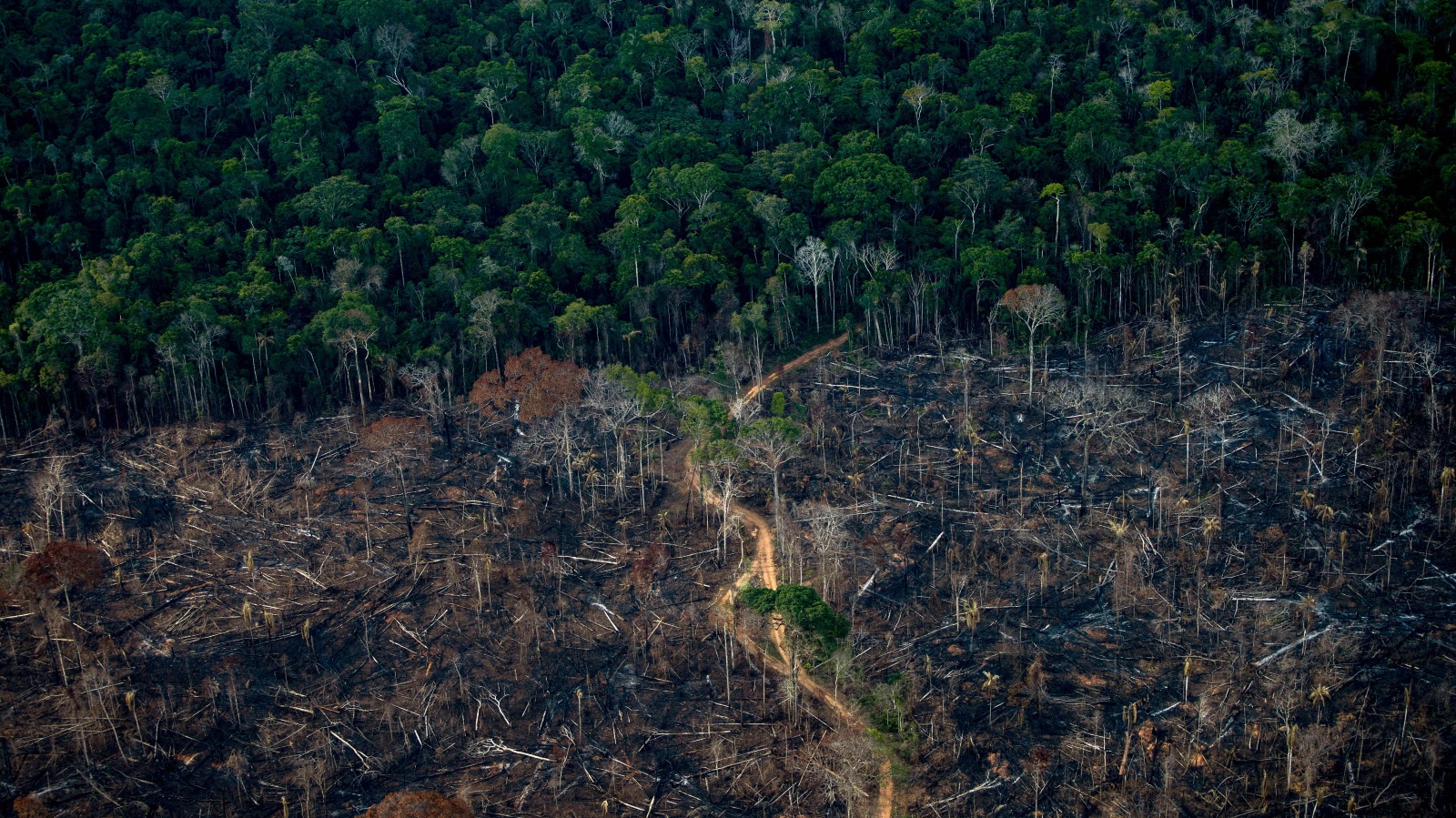
Among other significant changes to environmental norms was a directive from IBAMA, then-led by pro-industry Bolsonaro supporters, that loosened proof of origin documentation requirements for exported wood (later struck down by the Supreme Federal Court), and a presidential decree that encouraged mining in Indigenous territory. The government was changing regulations as late as December 2022, weeks after Bolsonaro’s loss in the polls, when IBAMA issued a measure that allowed for logging on Indigenous lands as well.
Lula might have gotten started on Day 1 in reversing many of these environmentally harmful policies, but scientists and environmentalists warn that results will take time. It is one thing to commit changes to paper and another to implement them on the ground.
“There are major trends of illegality that need to be reversed and a whole rebuilding process that has to happen. We won’t be seeing 2012 levels of deforestation in six months or a year,” Araújo told Grist, referring to the year with the lowest deforestation rate since records began in 1988. “The government will face a resistance that was not as strong back in 2003.”
Today’s Amazon is a very different place than the one Lula encountered when he began his first term as president. Brazil as a whole is significantly more polarized and much of the Amazon region is led by governors and mayors who align themselves with Bolsonaro. When Lula won the election in October 2022, Bolsonaro supporters blocked roads and highways to protest what they understood, without evidence, to be a stolen election. Many of these protests occurred in the Amazon’s frontiers of deforestation, such as the town of Novo Progresso in the state of Pará. “Bolsonaro created a bellicosity in the population,” Araújo said.
This tension came to high pitch on January 8, when Bolsonaro supporters, bused into the capital Brasília from all over the country, stormed and vandalized Congress, the Supreme Federal Court, and the presidential offices. Speaking after the events of that day, Lula speculated: “Many who were in Brasília today could have been illegal miners or illegal loggers.”
The Amazon has also become a more violent and lawless place. While homicides in Brazil overall have been declining since 2018, they have been on the rise in the Amazon. If the Brazilian Amazon were a country, it would have the fourth highest homicide rate in the world. Some of this can be attributed to the increasing presence of organized crime groups in the region, who have become involved in illegal mining, logging, and fishing operations and use the region’s waterways as drug trafficking routes. This trend became international news last year with the murders of Guardian journalist Dom Phillips and the Indigenous activist Bruno Pereira.
In addition to these challenges, Lula will face fierce opposition in Congress from politicians friendly to agribusiness and mining interests. Having been elected by a thin margin, he has limited political capital to spend. Some are wary that the administration’s commitment to protecting the Amazon will waver over time. Although the rise in deforestation was much more pronounced during the Bolsonaro years, it began under the administration of Dilma Rousseff, Lula’s handpicked successor after he left office in 2010.
Still, it is widely expected that deforestation rates will be declining by the end of Lula’s now third term as President of Brazil. “We can be sure of that,” said Araújo. “All it takes is for environmental protection agencies to be allowed to do their job.”
